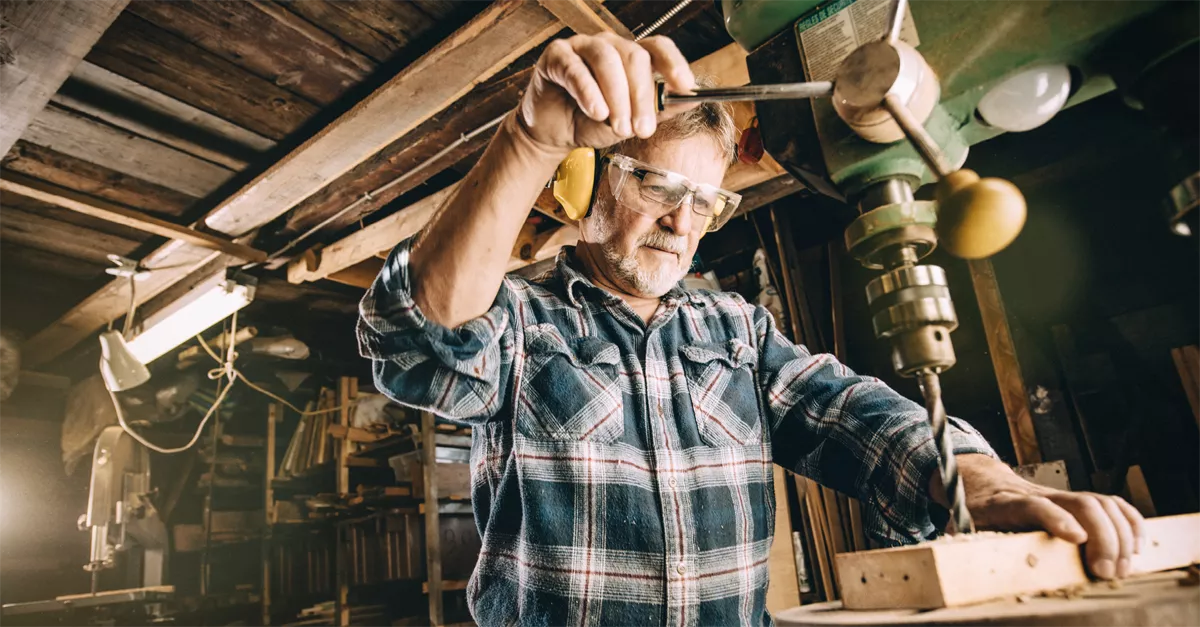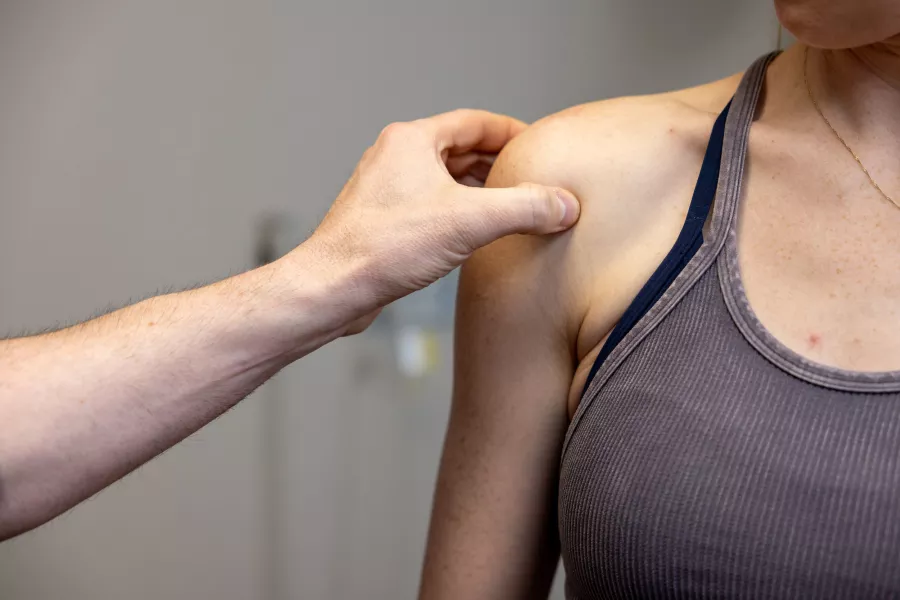FAQ: Shoulder replacement surgery
Chronic shoulder pain can keep you from doing the things you enjoy. Know when it’s time to consider a shoulder replacement—and what it involves.

If your shoulder hurts so much that you struggle to perform daily activities or even sleep at night, shoulder replacement might be your best option for relief.
If you’re considering shoulder replacement, it’s important to consult a highly experienced surgeon, advises University of Iowa Health Care orthopedic surgeon Brendan Patterson, MD, MPH.
“Patients should visit a surgeon with specialized training and expertise in shoulder replacement—someone who does shoulder replacements on a regular basis,” he says.
In this Q&A, Patterson highlights when to consider shoulder replacement surgery and what the procedure involves.
Q: Why do patients typically need shoulder replacement surgery?
A: The two most common indications for shoulder replacement are advanced shoulder arthritis, and a significant rotator cuff tear or other problems with shoulder muscles and tendons. The most common symptom is pain that can limit daily activities, like sports or reaching for objects above shoulder height. There can be other reasons to do shoulder replacement, too, like a bad shoulder fracture.
Q: How do you know a person needs replacement rather than physical therapy?
A: Physical therapy often is not helpful for arthritis, and if it’s advanced arthritis, we’re quite certain physical therapy will have limited benefits. But if it’s more of a rotator cuff issue, physical therapy can be helpful for some folks. Typically, if the patient already has had steroid injections for temporary relief and exhausted other conservative treatment strategies, then we talk about surgical options.

Is surgery right for you?
Don’t let shoulder pain get in the way of your day-to-day activities.
Q: Do patients who delay shoulder replacement run into potential issues?
A: Arthritis advances over time. When it advances, the cartilage wears away first, and then the bone within the shoulder joint erodes. If the bone and shoulder joint wear too much, that can change the replacement options available for patients. So, if you need a replacement, having it sooner would potentially increase the various options available to you.
Q: What are the replacement options?
A: Anatomic replacements, reverse shoulder replacements, and partial shoulder replacements known as hemiarthroplasty. Anatomic replacement replaces the ball with a prosthetic humeral head and the socket with a plastic liner. With reverse shoulder replacement, instead of having the ball component on the arm, it’s connected to the socket. We do reverse shoulder replacement for people with advanced rotator cuff issues or for people whose shoulder arthritis has progressed so much that regular shoulder replacement won’t be possible for them. Partial shoulder replacement, or hemiarthroplasty, can also be a potential option for younger patients or those wishing to continue higher-demand activities.
Q: What’s the post-surgery experience like?
A: Typically, patients can experience significant pain relief soon after shoulder replacement surgery. Patients generally have a period of immobilization in a sling. It’s helpful to have assistance around the house with some activities, like meal preparation and transportation. Physical therapy can help get range of motion back in the shoulder after replacement.
Q: What does the recovery period usually look like?
A: Recovery is a spectrum. It takes about a few months for patients to get a reasonably well-functioning shoulder so they can do most things day to day. But it can take up to one year to get full recovery after shoulder replacement. Full recovery is patient-specific, too. Someone who’s quite sedentary and is only looking for pain relief could be fully recovered four months after surgery. But it takes up to a year for a highly active person to fully recover.
Q: How might people expect to use their shoulders after full recovery?
A: That varies, depending on each patient. For patients who are quite active before surgery, my goal is to get them back to a high level of activity. For patients who are less active, my goal is to provide them with a functional shoulder so they can do the activities they need to do. If I have a 50-year-old who can’t golf because their shoulder is killing them, my goal is to get them to golf again without pain. If I have an 80-year-old who can’t sleep at night because their shoulder is bothering them so much, my goal is to get them a shoulder that doesn’t hurt so they can sleep and do their daily activities. I try to tailor each shoulder replacement to the specific needs and expectations of each individual patient.